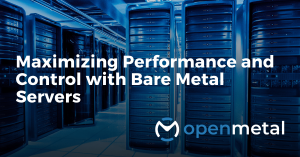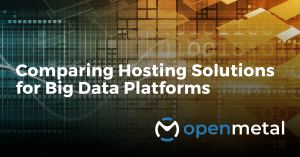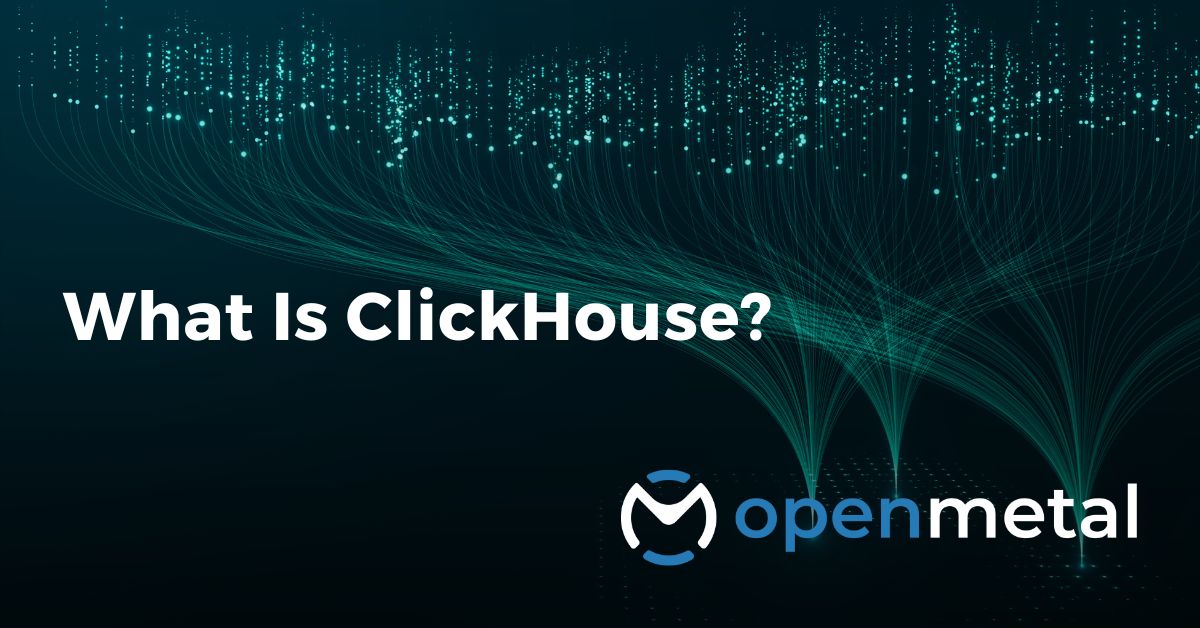What Is ClickHouse?
ClickHouse is an open source columnar database management system created by Yandex in 2016. ClickHouse was designed to provide users with a rapid and efficient system for processing large-scale analytical queries on enormous volumes of data. Today, organizations use ClickHouse for data warehousing, business intelligence, and analytical processing. ClickHouse has gained popularity in industries such as eCommerce, Healthcare, Internet of Things, Media, Gaming, and more because of its ability to process massive amounts of data quickly and efficiently.
What Are The Key Features Of ClickHouse?
Columnar Storage
In order to achieve better compression ClickHouse stores data from each column together which leads to more efficient compression as similar types of data are grouped together. The columnar storage system increases redundancy which results in reduced storage requirements. Considering that most of organizations that use ClickHouse are manipulating large datasets, the columnar approach makes ClickHouse a cost-effective solution for handling big data.
High Performance
ClickHouse is powerful and efficient solution for analytic queries on large datasets because of its columnar storage, advanced compression techniques, parallel and multi-thread processing, optimized data types, and support for distributed computing. ClickHouse’s method of storing data does more than just consolidate data, actually reducing the amount of storage you need. ClickHouse’s storage method is highly organized, allowing the program to quickly retrieve answers to your queries.
Scalability
ClickHouse is designed to scale horizontally, allowing users to add more servers to a cluster to handle increasing data volumes and query loads. Horizontal scaling allows users to distribute data and queries across multiple servers and nodes which will share the processing load. This method allows for performance to scale linearly on par with the addition of each new server as the database will collectively tap into the computational power of all the interconnected notes. This scalability allows organizations to begin with a modest ClickHouse setup and scale it up as their data and analytical needs grow.
Real-time Data Ingestion
While ClickHouse excels in analytics, it also supports real-time data ingestion. With ClickHouse, you can insert new data into tables continously without disrupting ongoing queries or analytics. This ability to support continuous data inserts and merges is crucial in environments where data arrives in a constant stream such as with IoT devices, logs, and other real-time data sources. While insert allows you to add new data without affecting analytics, merges allow ClickHouse to efficiently consolidate the new data with existing data to maintain the integrity of the database.
SQL Support
ClickHouse supports a subset of SQL, making it accessible to users familiar with relational databases. This makes it easier for users to adopt ClickHouse without a steep learning curve, as many users are already familiar with SQL from their experience with other relational databases. The SQL support in ClickHouse allows users to perform a wide range of analytical queries, including SELECT statements for data retrieval, filtering, and aggregation. Users can apply conditions, join tables, and perform various transformations on the data, all using standard SQL commands. This SQL support extends beyond analytical queries, to administrative tasks and system management. Users can use SQL statements to monitor performance, manage users and privileges, and configure various aspects of the database.
Open Source
ClickHouse is an open-source project, which means that users can access the source code, modify it, and contribute to its development. This openness has led to a growing community of users and contributors.
When Should I Use ClickHouse?
ClickHouse is best suited for use cases and scenarios that require high-performance analytics and efficient data processing. Here are some use cases where using ClickHouse may be advantageous:
- Analytical Queries on Large Datasets: ClickHouse is optimized for analytical queries and excels in scenarios where you need to analyze large volumes of data quickly. It is well-suited for data warehousing, business intelligence, and other applications involving extensive data analysis.
- Time-Series Data Analysis: ClickHouse’s ability to handle continuous data inserts and merges makes it an excellent choice for analyzing time-series data. Applications include monitoring systems, log analytics, and IoT data processing.
- Real-time Analytics: When there is a need for real-time or near-real-time analytics, ClickHouse’s support for continuous data ingestion allows it to handle streaming data efficiently. This is valuable for financial analytics or real-time dashboards where data is generated and analyzed in real-time.
- Highly Concurrent Analytical Workloads: If your application requires the ability to serve multiple analytical queries simultaneously, ClickHouse can manage these tasks effectively. ClickHouse has parallel processing capabilities that make it suitable for scenarios with highly concurrent analytical workloads.
- Data Warehousing: If your organization needs to collect, store, and analyze massive amounts of historical data for reporting and analysis purposes, ClickHouse can be a valuable solution. ClickHouse will provide a centralized and unified repository for historical and current data. This can be key for supporting business intelligence, reporting, and analytics initiatives.
- Scaling for Increased Data Volumes: If the data you want to process is perpetually fluctuating, you will need a scalable database. ClickHouse’s horizontal scaling capabilities allow you to increase your computational capabilities to maintain performance and efficiency while processing growing data volumes.
- Cost-Effective Storage for Big Data: If you’re processing massive amounts of data, storage for these large data sets can become costly. ClickHouse’s efficient data compression helps reduce storage costs for large datasets.
Use Cases Not Suited For ClickHouse
While there are many instances where ClickHouse can rise to the task and shine bright as it amazes us with its capabilities, there are some use cases where it may be best to choose an alternative to ClickHouse. Let’s look at some use cases that do not tap into the strengths of ClickHouse.
- Transactional Workloads: Transactional workloads involve operations related to the management processing of transactions. These transactions can include: online purchases, banking transactions, reservation systems, point-of-sale systems, inventory management, subscription management, etc. ClickHouse is primarily designed for analytical queries and may not be the best choice for transactional workloads that involve frequent and complex read and write operations. If your application requires accommodating transactional workloads, then a databases designed for transactional processing, such as MySQL, PostgreSQL, and Oracle, may be better suited.
- Complex Multi-Table Joins: For workloads that generates queries in relational databases that involves merging data from multiple tables using JOIN operations, complexities may arise, especially when dealing with an extensive number of tables or intricate relationships among them. While ClickHouse performs exceptionally well with single-table analytical queries, it will likely face challenges with complex multi-table joins. If your workload involves intricate joins and a high degree of relational complexity, other databases with a focus on OLAP and complex querying may be better suited for your workloads.
- Real-Time Data Updates: While ClickHouse supports real-time data ingestion, it may not be the optimal choice for use cases that require immediate and continuous updates to the data. ClickHouse’s reliance on batch processing, columnar storage, and indexing considerations makes it unsuitable for use cases that depend on frequent and immediate data updates.
- Small to Medium-Sized Datasets: ClickHouse was designed to be optimal for large-scale data processing, and this comes with a significant overhead. The overhead associated with its columnar storage and parallel processing may not be justified for small to medium-sized datasets. While the incurred overhead may be reasonable if you anticipate substantial growth in the data you need to analyze, opting for simpler databases or in-memory databases could be more cost-effective and prudent if you expect your dataset to remain small or medium-sized and seek improved performance.
- Heavy Write-Intensive Workloads: ClickHouse is optimized for read-heavy workloads and may not perform as well with heavy write-intensive workloads. Heavy write-intensive workloads can include: logging systems, social media platforms, online gaming, content management systems, etc. If your application involves frequent and intense write operations, databases designed specifically for high-speed write operations may be more suitable.
Why Should I Run ClickHouse On Bare Metal?
Choosing the right infrastructure to run your ClickHouse set up can affect the performance, control, and resource utilization of your system. There are several key benefits to running ClickHouse on bare metal rather than on virtualized or containerized platforms.
Bare metal installations offers direct access to the underlying hardware, which increases performance. ClickHouse is able to directly utilize available resources without any additional processing to go through a virtualization layer.
Bare metal deployments also offer better isolation between instances, reducing the risk of resource contention and ensuring consistent and predictable performance. With optimized I/O performance and the ability to tailor hardware configurations, including storage devices and network interfaces, bare metal installations are well-suited for ClickHouse’s operations.
The control provided over the entire system allows administrators to fine-tune settings, troubleshoot effectively, and optimize configurations to meet the specific needs of ClickHouse, contributing to lower latency and faster query response times.
Additionally, by running ClickHouse on bare metal, you can increase data security by reducing the risk of data exposure and unauthorized access that may be associated with shared virtualized environments or cloud deployments.
Dedicated Bare Metal Server Options
To mitigate redundancy from a managerial perspective and eliminate potential performance degradation associated with running extensive open source systems like ClickHouse or Mongo on cloud platforms, OpenMetal offers users the option to purchase bare metal servers. These servers are available as standalone units, in clusters, or can be seamlessly integrated with existing cloud infrastructure.
Ready to explore bare metal as a service? OpenMetal gives you all the benefits without the hardware overhead.
More on the OpenMetal Blog…

Maximizing Performance and Control with Bare Metal Servers
Picture having a dedicated physical server exclusively at your disposal, brimming with processing power, memory, and storage. No resource-sharing, no virtualization layers – just pure performance, …Read More

How OpenStack Can Help You Build and Deploy AI and ML Models Faster
Artificial Intelligence (AI) and Machine Learning (ML) have been prominent topics within the technology landscape for an extended period. However, the emergence of …Read More

Comparing Hosting Solutions For Big Data Platforms
This article defines big data and its applications, the big data solutions platform that process the data, and big data infrastructure requirements necessary to support operational efficiencies…. Read More
Test Drive
For eligible organizations, individuals, and Open Source Partners, Private Cloud Cores are free to trial. Apply today to qualify.
Subscribe
Join our community! Subscribe to our newsletter to get the latest company news, product releases, updates from partners, and more.



































